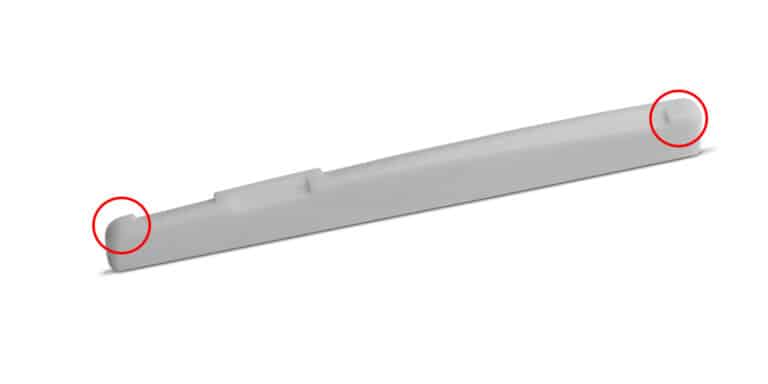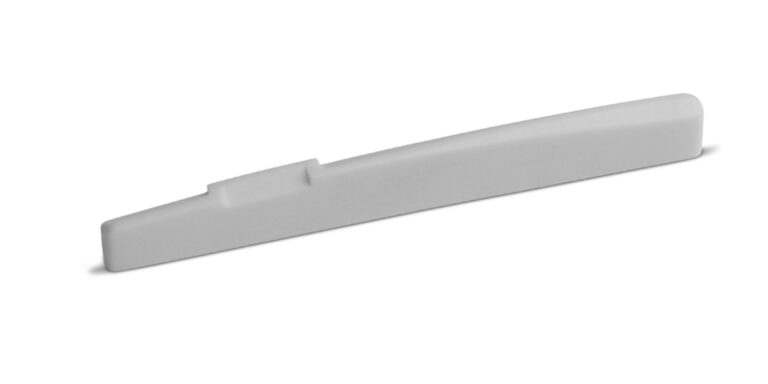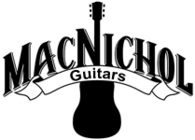Guide to B Compensated Acoustic Guitar Saddles
At first glance, B compensated guitar saddles might appear the same. However, different types exist, and choosing the correct one for your guitar is necessary to maintain your intonation. Let’s review the different types.
Forward Line B Compensated
Perhaps the most common type is the forward line B compensated saddle, which is often, but not always, seen on some Gibson, Taylor, Larrivee, RainSong, and other guitar brand models.

With this type, all the strings rest toward the front of the saddle, closer to the soundhole, except the B string, which is compensated back toward the bridge pins. Looking down on the top of a Gibson style saddle would look similar to the above image, which has the saddle slot angle at three degrees. The blue line shows approximately where each string would sit on the saddle’s top.
Center Line B Compensated
Although quite similar to the saddle discussed above, a center line B compensated saddle will have the all strings rest in the saddle’s center, but with the B string compensated back toward the bridge pins as shown in the below bird’s eye view of a Recording King type saddle.

This is a much less common saddle type than the forward line B compensated saddle is, but you will see these on a number of Recording King models, and some post-2018 Yamaha Red Label models that are made in Japan.
Compensated B with Slanted Bass
This type will put the treble E forward, the B backward, the G forward, and then a progressive slant for the D, A, and bass E strings as shown in the below image of an Alvarez style saddle. This type is quite common, and often seen on some Alvarez, Eastman, Epiphone, Guild, Yamaha models, as well as other brand models.


These are merely decorative and have no efffect on intonation. You will see some saddles that are B Compensated with slanted bass that do not have decorative edges, such as the Eastman style saddle shown below.

You might be tempted to replace your forward line B compensated saddle with a compensated B with slanted bass. However, please note that the compensated B with slanted bass is not necessarily an improvement. It might affect your intonation, but this could be a negative impact. Builders factor in saddle angle, scale length, and string diameter to determine which saddle compensation to use. As such, unless there’s a specific intonation issue you wish to address, we advise using the same compensation pattern that the guitar builder uses.
Which Saddle Does Your Guitar Need?
Still wondering which saddle your guitar needs? Please contact us with all of the below information.
- Fretboard Radius – Confirm by contacting the manufacturer with your serial number
- Current Saddle Length, Maximum Height, Thickness – Must be measured with a caliper
- Bass to Treble Edge Height Difference
- Guitar Saddle Slot Length, Thickness (if different from saddle specs) – Must be meausured with a caliper
- Guitar string spacing at the bridge
- Current Saddle Compensation Pattern (Please send a picture if you are not sure which type you have)
We will respond within 48 hours.
